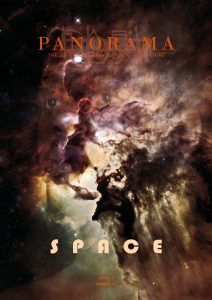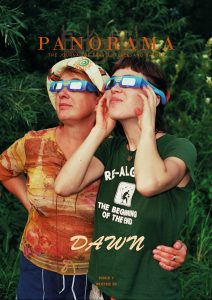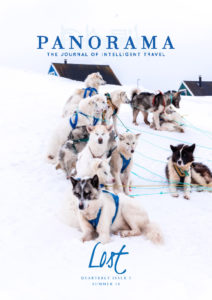Our earliest experiences are for the most part inaccessible. Retellings, memories of memories, reconstructions based on moods that suddenly flare into life.
–Tomas Transtromer; Memories Look at Me.
It is expected you would know a city where you have lived all your life by heart; it would seem natural if you knew it like the palm of your hand: its skies and crevices ought to be tucked deep down your mind such that you should be able to navigate it blindfolded. How accurate this is or who placed the responsibility on you is just a question of truism. Perhaps, to answer that, whether you can truly calibrate ad libitum the cartography of the city of your birth, you might linger here and indulge yourself in some brief nostalgia.
I have lived two decades of my life in the city of Ibadan, Nigeria, and twenty years is surely no small space of time in the life of a man in his mid-twenties. This comes with a certain assumption and a responsibility that I must know this city intimately. And it is no exaggeration that these two decades are also the best of my life because the city has indeed gifted me with entrancing memories. I was born and raised here. I made my childhood memories here. Out here is the first world I knew. I love its fulgent sun that tanned my skin. I love its rain that we cupped in our little hands when we were young; I even love the tingling headache that came after playing in the rain. I love this land; I love this loam that gave me my accent.
Not for once did it ever occur to me that I could become a stranger in this city. It never entered my mind I could psychologically become lost in Ibadan. Which brings to my mind now an Ibadan cliché that goes ‘Ìbàdàn lo mò oò mo láyípo.’ meaning it is the Ibadan city you know, you don’t know its intersections. Folk wisdom like this one exaggerates the landmass of the city. For many years, I never knew that it also meant that a person, who has not seen the panorama of the city from a certain tower called Layipo, cannot claim total knowledge of Ibadan.
The saying came back to haunt and taunt me, daring my knowledge of the city when my friends and some other travellers—under the aegis of Invisible Borders, a trans-African Travel Collective making a road trip around Nigeria, Borders Within 2017: The Second Trans-Nigerian Road Trip—came to Ibadan, and I was to be their guide.
My duty was to conduct them around the city, where they could come into contact with their various interests and to introduce them to literary personalities of the city. As simple as this might sound, I didn’t know why my confidence sagged. My brain tightened into a knot running algorithmically over possible places I could take them. I had a few suggestions, but I was not sure whether they would meet their expectations.
While I was ruminating over this, their call came in. “Literary Gangster! How far, brother? We are now in Ibadan o.” It was Yinka Elujoba, Invisible Border’s director of publications.
‘Cosa Nostra,’ Innocent had taken the phone—only he calls me by that name. “Shey you know say na you we dey wait for? Dey come fast-fast. We are staying in Bodija.” The edginess and restlessness of his voice was familiar.
“Okay. Text me the address na.”
“Okay. Meet me in Bodija now.”
So, I went to meet them, without having a concrete schedule, wondering what kind of tour guide I would be.
***
I linked up with them later that morning. It was refreshing seeing them again in flesh. What thrills more than genuine friendship? It is such a priceless thing that we only feebly try to quantify with epigraphs. We laughed, side-hugged, slapped each other’s shoulders, and I was quickly introduced to the other team members I was not so familiar with: Kechi Nomu, a poet and culture writer; Nengi Nelson and James Bekenawei, photographers; Amara Nicole, a lawyer and writer; and Kene Nwatu, a photographer and second-generation filmmaker.
“First, we would like to get some personal effects at the Mall,” Innocent said.
“That’s easy,” I thought to myself.
“Then from there you’ll lead us elsewhere.”
We hopped into the van and continued chatting. Somehow, the small talk restored my confidence.
As I led the way, pointing the driver in the right direction, Nengi Nelson beamed her phone camera on my face, urging me to repeat some fun facts and trivia about the city I had mentioned minutes before.
Ibadan: The Pacesetter
Ibadan is a distinct African city when you consider its history, socio-political, and monarchical system. The city was founded as a war camp by Lagelu and other roving warriors fleeing Oyo Ile and other ancient Yoruba cities during the early 19th century Yoruba Civil Wars. It was a period of strife, and the war camp was a place for the warriors to regroup. So, they settled near an odan tree at the fringe of the current city because its many hills provided security and a strategic advantage. Hence the name ‘Ibadan’ meaning ‘the place by odan tree.’
Then the synoecism of the city began. More people settled here, and it became a commercial hub. Several traders from the Yoruba hinterland traded in the city, and, significantly, the economy was stabilised by the warriors who formed the monarchy based on ability. The present monarchical system and rule of ascendency is modelled after this early format. That is why ambitious Ibadan indigene can rise to the position of Olubadan, the King of Ibadan, if he wishes and is able. There’s no recognised royal family. This peculiarity is why Ibadan is regarded as the ‘city of the freeborn’ by historians. When the city came under British influence in 1893, commerce boomed, and it grew into a major city, a status it still enjoys. It saw major infrastructural developments during this period like the first staircase in West Africa.
As Nigeria was shedding colonialism in the early 1950s, Ibadan also played a prominent role in the political permutations of the time. It was the administrative capital of the old Western Region. Because of this, many infrastructural amenities including the Cocoa House, the first skyscraper in the Africa, came into existence.
Ibadan was also home to the University College of Ibadan (now University of Ibadan) which was Nigeria’s first university. The first generation of Nigerian writers emerged here. Conjure up any big name from the independence period, and you will find that most studied in or had something to do with Ibadan. Professor Femi Osofisan documented the Ibadan Renaissance in his inaugural lecture, titled The City as Muse: Ibadan and the Efflorescence of Nigerian Literature, arguing that it is not a coincidence the city has nurtured generations of Nigerian writers including Chinua Achebe, Christopher Okigbo, J P Clark, Wole Soyinka, Mabel Segun, Odia Ofeimun, Niyi Osundare.
In this spirit, J P Clark paid homage to the city in his epigrammatic poem, ‘Ibadan’. It is short enough to quote in its entirety:
Ibadan,
running splash of rust
and gold – flung and scattered
among seven hills like broken
china in the sun.
The poem has acquired anthemic popularity such that when you think of Ibadan, it readily comes to mind. As a matter of fact, there was a time I participated in a poetry workshop facilitated by Jumoke Verissimo and Akeem Lasisi. The task was to write a poem about Ibadan. It was not a surprise that everybody was influenced by this poem and what we turned out to our facilitators was Clarkesque. I have also listened to writers who have read the poem and upon visiting Ibadan for the first time, there’s a feeling of déjà vu that spread across their faces. Surely, Clark knew Layipo, so to speak, because the poem indeed presents a panoramic view of the city. In those five lines, everything about Ibadan can be gleaned. The syntactic truncation and structure of the poem is even mimetic of the disorderly landscape of the city. There is no other poem about Ibadan that has captured the city like this one. None.
And there is no other place to better appreciate this poem than taking in a similarly sweeping view of the city. This informed my decision to lead the team to Bower’s Tower on Oke-Are hilltop.
Follow with me on the Mount of Vision
The hilly path to Bower’s Tower teems with roadside prophets and seers. Most had matted dreadlocks and were draped in white linen so they looked like grotesque angels. It reminded me of the prophets in Wole Soyinka’s Jero Plays, which I did not fail to point out to Kene, who was interested in documenting spiritual personalities. He took the opportunity to interview a prophetess we came across there.
At Bower’s Tower old memories hung around like the overgrown weeds in the frontage of the bungalow that housed Captain Ross Bower, the first Resident and Travelling Commissioner of Ibadan and Interior Yorubaland (1893-1897) during British rule in Nigeria, for whom the tower was named by the Ibadan Native Authority for his generous disposition to the natives. The bungalow now stood decrepit, its fallen roof overlooking the expanse of the city. Someone, I think Kemi, joked about Captain Bower waking up to the magnificent view every morning, or after being brought news of the city he would arm his vision with binoculars trying to pinpoint the location of a brawl or fracas. He must have felt like God, she said. Besides, it seemed the Captain loved heights for he died in an accident during the Second World War when the British were testing explosives on another hill in a small town now in Osun State.
We negotiated our way to gain access to use the stair called Layipo – supposedly the first staircase in West Africa, designed by Taffy Jones, the engineer that also designed the Mapo City Hall – accompanied by the middle-aged men who tended the near ruin. It was an antiquated spiral tunnel which still looked sturdy enough to try. However, caveat: if you are claustrophobic and prone to feeling vertiginous, don’t try it. Amara was terrified shitless when she climbed it. :The fact this thing is more than a century old scares me,” she said and tiptoed down back within seconds, groping the wall.
The photographers whipped out their cameras. The view was a delight for those connoisseurs. Cocoa House and Femi Johnson dominated the landscape, towering like rude, proud things amidst humbler brown roofs. I could see places all at once. The Methodist Church along Agbeni road caught my attention because it was close to my grandmother’s house; it was an emblem from my childhood.
I was riveted by the spire on top of the church. It beckoned me into a vision of my early childhood. After an episode in which my playmate got lost one evening, I was told to always make the spire a point of reference in case I wandered far too. The practice was common then because, later in the evening at the University of Ibadan, Professor Remi Raji-Oyelade shared a similar experience about using the Cocoa House as a guide to home should he get lost when he was a child.
Now I did not know whom it was that used to make mockery of me that time, but the person would chime, “No, he can’t get lost. All he has to do is bare his stomach to a good Samaritan and say 15: 6: 1991. Now take me to my Grandmother,” referring to the permanent tattoo on my stomach. I was told it was a compliment from the old woman who had me snipped because she remarked to my grandmother ceaselessly I was a beautiful baby. Well, I can only say I am grateful to the old woman for divining my path. To my mocker I was supposed to be ashamed that my date of birth would forever be known to everybody who cares to look at my stomach. And when I was in my teens, my cousin and his friends would also taunt me that I could never date a girl older than me. But just thinking about it now, I have had a couple of intimate encounters with girls that never saw the tattoo and I was not trying to hide or conceal anything.
I can remember the numbers were also one of my many monikers those days. Oh yes, I can remember the mischievous man now who enjoyed teasing me and rechristened me. He was a son of my mother’s friend in the market. Upon seeing me he would raise his airy arms to his face and call, ‘15/6.’ My mother would protest but he would laugh anyway.
I see also memories of my first encounter with white people in the Agbeni Market. It was a late afternoon, and I remember the breeze was soothing. I was not wearing a shirt. They were welcomed by my mother and the woman at the next stall. Upon seeing my date of birth tattooed on my stomach they were awed. They touched it as if it were not real, and some of them took photographs of me. When they asked if they could take me back with them to their country, my mother, alarmed, yanked me away. The reflex was sharp, eagle-like. Beyond business, they were her friends. But I was also her favourite. Years later, when I’d come to know a bit about the injustice of the world and racial politics, I would question myself about their intentions. What if I was paraded in a zoo someplace? Thank you, Mother, for protecting me.
My other encounter with white men was there in the market. That day, they came to my mother’s family temple of Sango. They venerated every act of ritual the priest performed, took notes. I couldn’t comprehend their solemn devotion to objects in the temple: the figurines in their different postures, the Sango double-axe on the wall, the bitter kolas and cowries stuck to a grimy mound of earth in a corner of the temple. But years later, when the Sango effigy and figurines, the real ones, started disappearing, and the temple keeper started adding fat to his neck, my mother would bemoan him selling them to the white men….
I was jolted out of my reverie by a voice nudging me to do something. It belonged to James, one of the photographers in the group. He asked me to pose for his camera. I did. His face beamed with satisfaction as he showed me the image and scrolled through several monochrome images on his camera’s LCD. What of my tour of memories had he seen in my face?
We groped down the stairs and I knew we had accomplished something together. We had unearthed and made memories together.











